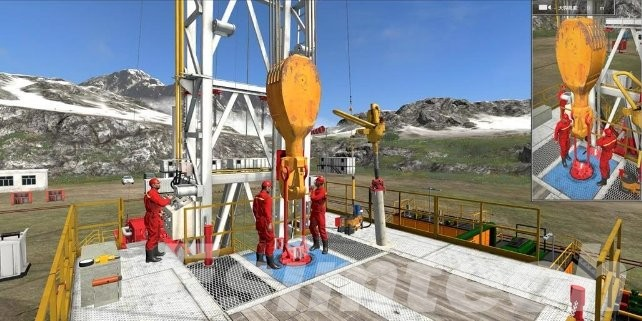What Is Downhole Operation Simulator
The oil and gas industry relies heavily on downhole operation simulator. It enables operators to develop a virtual model of downhole operations that can be tested and optimized for drilling, completion, and production activities.

Definition of the Downhole Operation Simulator
The downhole operation simulator is a computer-based simulation tool used in the oil and gas sector to virtually mimic downhole activities. It is a complex software program that generates a precise model of downhole conditions and simulates various drilling, completion, and production procedures. The simulator enables operators to test various situations and make decisions based on the results without the need for physical testing or jeopardizing personnel and equipment safety. It is an important instrument in the oil and gas business since it helps to improve efficiency, cut costs, and increase safety.

Applications of the Downhole Operation Simulator
It is a versatile instrument capable of simulating a wide range of downhole operations and providing useful insights on the performance and efficiency of drilling, completion, and production operation.
Drilling operations
It can simulate various drilling scenarios and offer information about the performance of the drill bit, drilling fluid, and drilling rig. It can also assist operators in optimizing drilling trajectories and wellbore location, lowering the likelihood of drilling errors and increasing drilling efficiency.
Well completion operations
It is capable of simulating various well completion scenarios and providing insights into the performance of completion instruments and approaches. It can also assist operators in optimizing the design and positioning of completion equipment like as packers, screens, and tubing in order to maximize output while minimizing expenses.
Production operations
The downhole operation simulator may mimic various production scenarios and provide information about the performance of production equipment such pumps, valves, and separators. It can also assist operators in optimizing production rates and identifying possible bottlenecks in the production system, so increasing overall efficiency and decreasing downtime.
Training and Education
Downhole operation simulator is a training tool for new operators and engineers, allowing them to get downhole operations experience without the risk of physical testing. It can also be utilized as a teaching tool for students and researchers, allowing them to gain a thorough grasp of downhole operations and the issues they face.
-1-1024x576-min.jpg)
Advantages of using the Downhole Operation Simulator
Increased safety
Blowouts, fires, and equipment failures are all potential hazards during downhole operations. Operators can use simulation technology to test various situations and detect potential safety issues before they materialize in the field. This aids in the prevention of accidents and the reduction of risks to employees and equipment.
Improved efficiency
Downhole operations, including as drilling trajectories and wellbore locations, can be optimized using simulation technology to enhance productivity while minimizing expenses. Operators may discover the most efficient and cost-effective approach to downhole operations by testing numerous scenarios in a virtual environment, reducing the need for trial and error in the field.
Reduced downtime
In the oil and gas business, downtime is a primary cost driver, and any downtime caused by equipment failure or other issues can result in large financial losses. Operators can use simulation technologies to anticipate possible issues before they arise and take preventative measures to decrease downtime and production losses.
Enhanced decision-making
The downhole operation simulator enables operators to run various scenarios and assess the potential impact of their decisions on downhole operations. This aids in decision-making by ensuring that the most effective and efficient strategy is used.

How the Downhole Operation Simulator Used In The Oil and Gas Industry
Shell
Shell has been employing the downhole operation to optimize deepwater drilling operations. Shell was able to discover the most efficient and cost-effective technique to drilling deepwater wells by modeling several drilling scenarios. Shell was able to optimize drilling trajectories and wellbore location thanks to the DOS, lowering the risk of drilling errors and increasing drilling efficiency.
BP
The simulators have been used by BP to optimize well completion operations in unconventional reservoirs. BP was able to find the most effective and efficient technique to finishing wells in tight formations by simulating several well completion scenarios. The DOS enabled BP to improve production while minimizing expenses by optimizing the design and positioning of completion equipment including as packers, screens, and tubing.
Total
Total was able to detect possible bottlenecks in the production system and optimize production rates by modeling alternative production scenarios. Total was able to identify and manage production issues before they happened in the field thanks to the downhole operating simulator, which reduced downtime and improved overall efficiency.
Chevron
The simulators have been used by Chevron as a training tool for new engineers and operators. Chevron was able to mimic various downhole procedures and provide hands-on exposure to novice operators without the risk of physical testing. This aided in the improvement of operator competency and the reduction of the risk of accidents and downtime.
Summary
The powerful downhole operation simulator is used to optimize drilling, well completion, and workover training in the oil and gas industry. It is offering a virtual environment to mimic and evaluate different downhole procedures before implementing them. It enables operators to optimize operations, decrease risks, and cut costs, thereby enhancing the efficiency and productivity of the industry.
